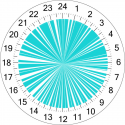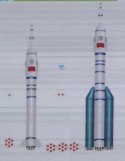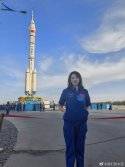Hendrik_2000
Lieutenant General
Henri K did some article on the subject quoting resource fromWhether or not they can have preferentially better coverage for one particular relatively low latitude area of the planet than others can be told by the inclination, altitude and eccentricity of their orbits. Anyone known their orbit attributes?
Blanket
Speaking of coverage, let's take a look at what the constellation can do. Given its inclination, it is optimized to observe the environment close to China, in particular the approaches to its Pacific coast. Taipei, the capital of Taiwan, is therefore a very representative area of interest, especially since the recent rearmament efforts of the Republic of China with the United States have heightened tensions in the region.Based on the 3D models of the satellites that Chinese TV broadcast, they don't appear to carry radar or imaging systems, so they are probably used for electronic intelligence, possibly with a communications function as well. These types of sensors generally need to see their target at an angle of incidence of at least 5 °. Based on this assumption, we can calculate Taipei's coverage over a 24-hour period:

And even simulation using Taipei as a target



